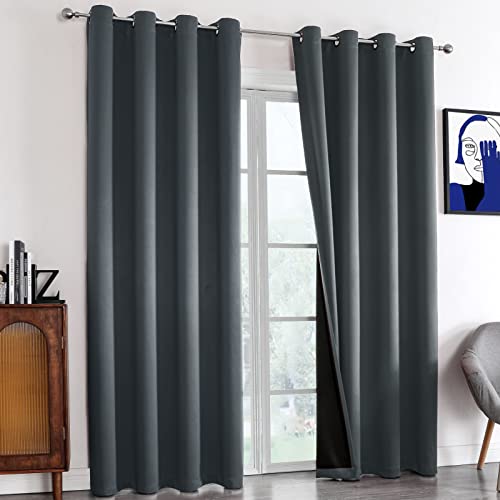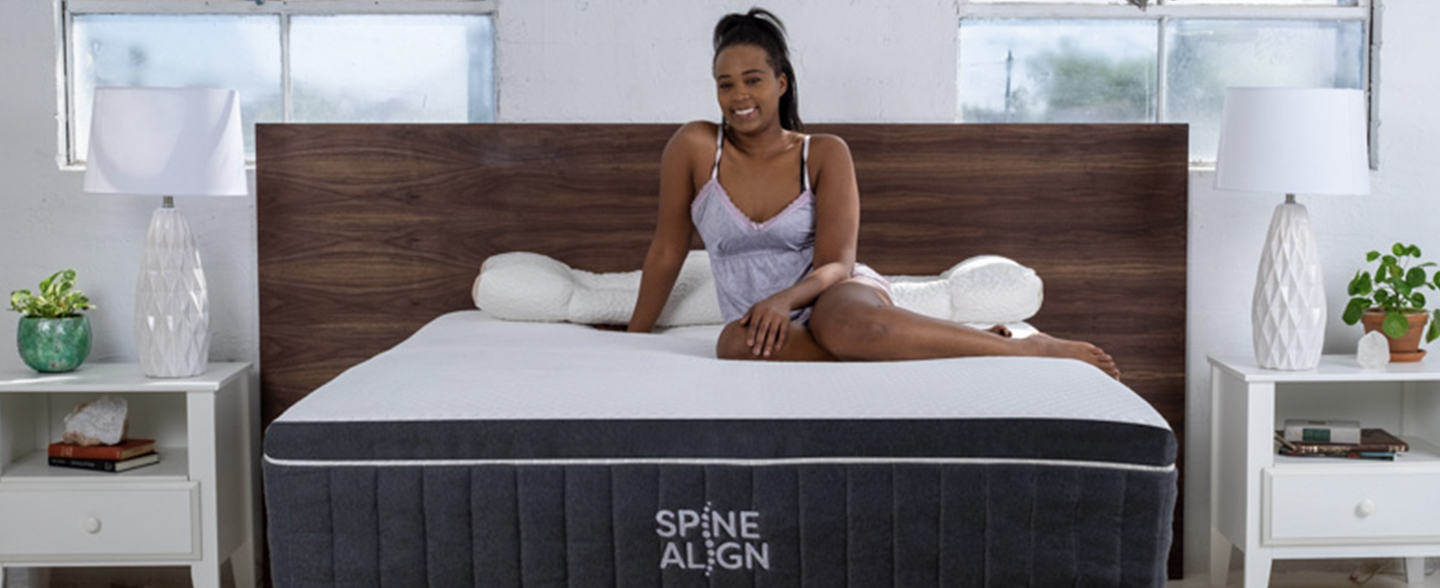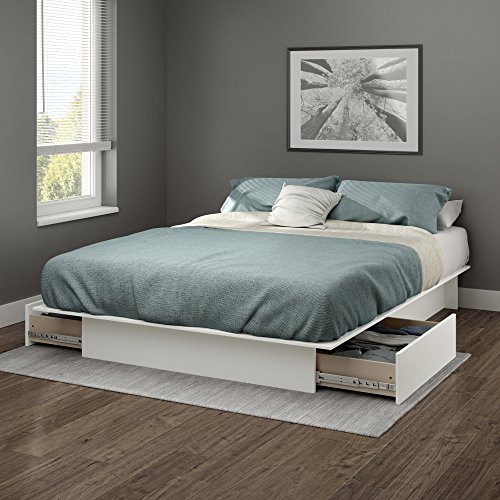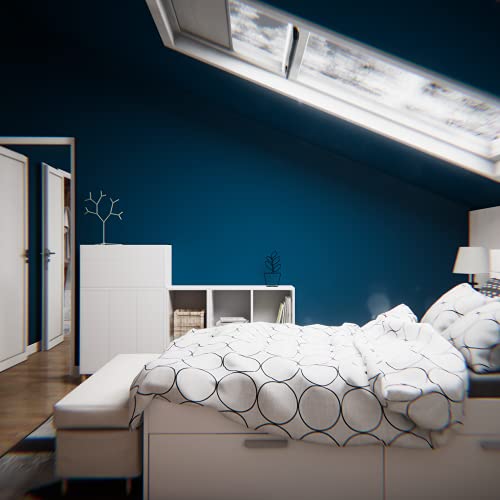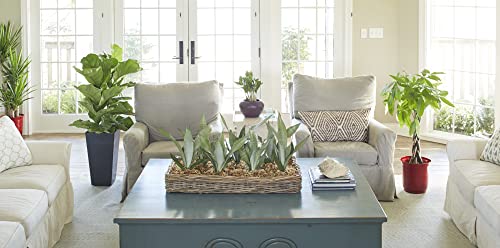Disclosure: This post may contain affiliate links, meaning we get a commission if you decide to make a purchase through our links, at no cost to you. Please read our disclosure for more info.
Struggling to get a good night’s sleep? An uncomfortable bedroom could be to blame. Various design features can turn our sleep zone into a place of calm that encourages sleep. Here are just a few ideas that could put your sleep woes to rest.
In This Post:
1. Buy Blackout Curtains
Unless you’re scared of the dark, a bedroom that lets in the light is likely to keep you awake. Our brains need total darkness at night to create melatonin – our sleep hormone. Street lights outside could be tricking your brain into thinking it’s not night time, stopping your from producing melatonin. A black-out curtain or set of black-out blinds can help to block out all light and induce better sleep.
On a related note, limiting light before bed is also important for lulling the brain to sleep. Intense lights from screens such as TVs and mobile phones will prevent melatonin production. Have an hour before sleep without any bright screens – take a bath or read a book instead.
2. Upgrade Your Mattress
An uncomfortable mattress could be keeping you up at night. You should ideally replace your mattress every eight years. Everyone has their preference when it comes to the ideal mattress, some preferring a soft surface that they can sink into, other preferring a harder mattress that offers rigid support. The latter is recommended for those with back problems as sturdiness puts less pressure on the spine than springiness.
3. Contain Clutter
A cluttered desk is a sign of a cluttered mind, so they say. The same applies to a bedroom. Clutter is psychologically distracting and can make us more alert. By storing this clutter out of sight and opting for a modern minimalist bedroom, you may find yourself sleeping much better. Consider buying a bed with storage compartments underneath and special places for storing away cosmetics and electronic items such as hairdryers and straighteners.
4. Use Cool Colours
Your colour scheme can also have an effect on your sleep. Warm colours such as yellows, oranges and reds create a sense of energy and are great for living rooms and kitchens – but bad for our bedroom walls. You’ll sleep much better with a cool colour scheme of blues, greens and greys.
5. Purify the Air
Air quality is important for our sleep quality. You should try to keep your bedroom well ventilated by opening a window whenever it’s not too cold. This will provide a fresh source of oxygen into the room (bedrooms facing busy roads may want to install an extractor fan so that they’re not breathing in car fumes all the time).
Plants meanwhile can help provide more oxygen and help purify the air of toxins. They can also act as natural dehumidifiers, sucking moisture out the air that could cause mould.
You should go easy on scents from candles or incense sticks as these could be distracting as you try to sleep. That said, some scents such as lavender and chamomile are great for helping you to nod off.


